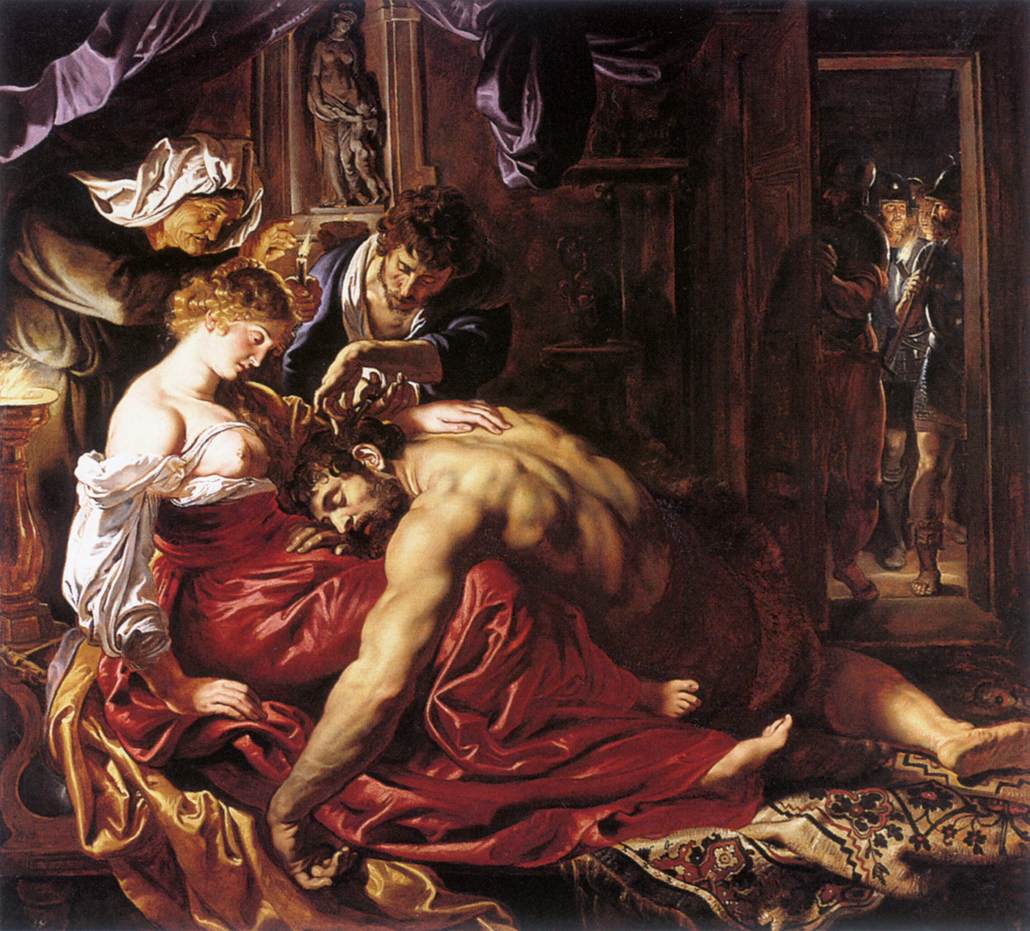Peter Paul Rubens, Samson and Delilah, 1609-1610
73 x 81 in.
Peter Paul Rubens (1577-1640) was a Flemish Baroque artist and one of the most influential painters in the history of art. His father was a Calvinist and his parents fled Antwerp for Cologne in 1568 due to persecution of Protestants, however after the death of his father in 1587, Rubens was raised Catholic by his mother, Maria Pypelincks. Religion played a major role in Rubens's work and he would go on to become a major voice of the Catholic Counter-Reformation. Rubens received a humanist education before being apprenticed to some of the leading artists of the day. After joining the Guild of St. Luke in 1598, he traveled to Italy where paintings by Italian masters and Classical sculpture had a profound impact on him. Throughout his prolific career, Rubens mostly painted mythological scenes, religious works, and portraits. In addition to his prodigious technical skill, Rubens gave his subjects a profound humanity, such as in Virgin in Adoration of the Christ Child (c1615) where the adoration he expresses is really the love of a mother for her child. Among his best known works is the extensive Marie de' Medici Cycle, depicting the life of Marie de Medici and her husband Henry IV of France. Despite its size (twenty-four paintings) and grandeur (each about 13 x 10 feet), the series was never completed due mostly to the exile of the queen in 1630 by her son, Louis XIII. Samson and Delilah is a relatively well known painting, now hanging in the National Gallery in London. Having fallen in love with Delilah, Samson tells her that his uncut hair is the source of his strength. Now he has fallen asleep in Delilah's lap and a servant cuts his hair. Philistine soldiers wait outside the door to arrest the weakened Samson. Notice Delilah's expression. She appears guilty and uncertain of what she is doing, torn between the agreement she has made and her feelings for this man whom she has seduced. This differs from the biblical narrative but it seems clear in Rubens's version. The complexity of this composition is a remarkable achievement, both in the arrangement of the figures and the elaborate setting. Elements such as Samson's musculature, Delilah's flesh, and her draping gown are all outstandingly rendered to create a painting of great intensity and impact.
[Note: My apologies to my readers for the lack of discussion in my last two posts. I have been injured and not felt up to writing full entries. I hope to edit them in the next few days.]

No comments:
Post a Comment